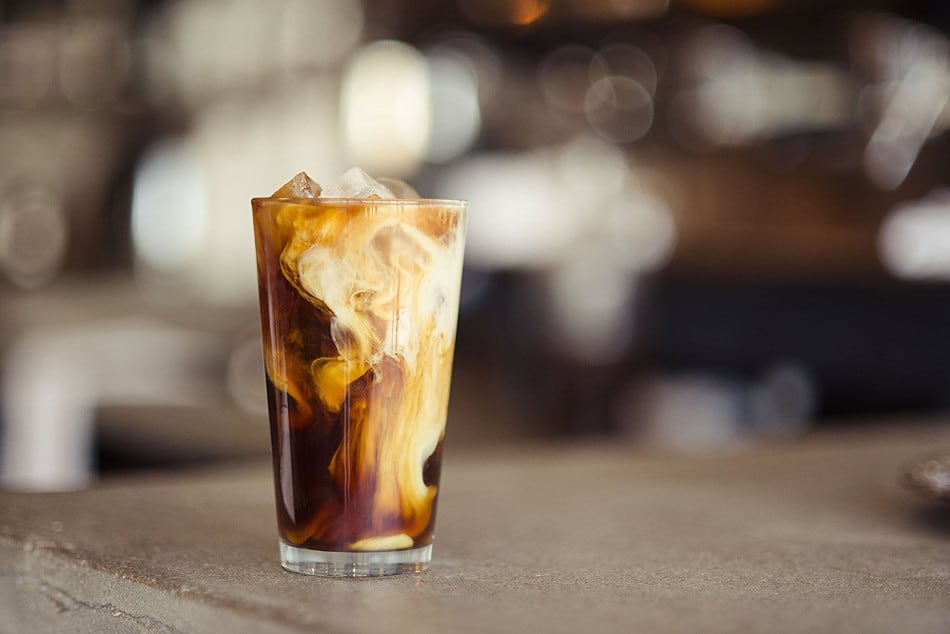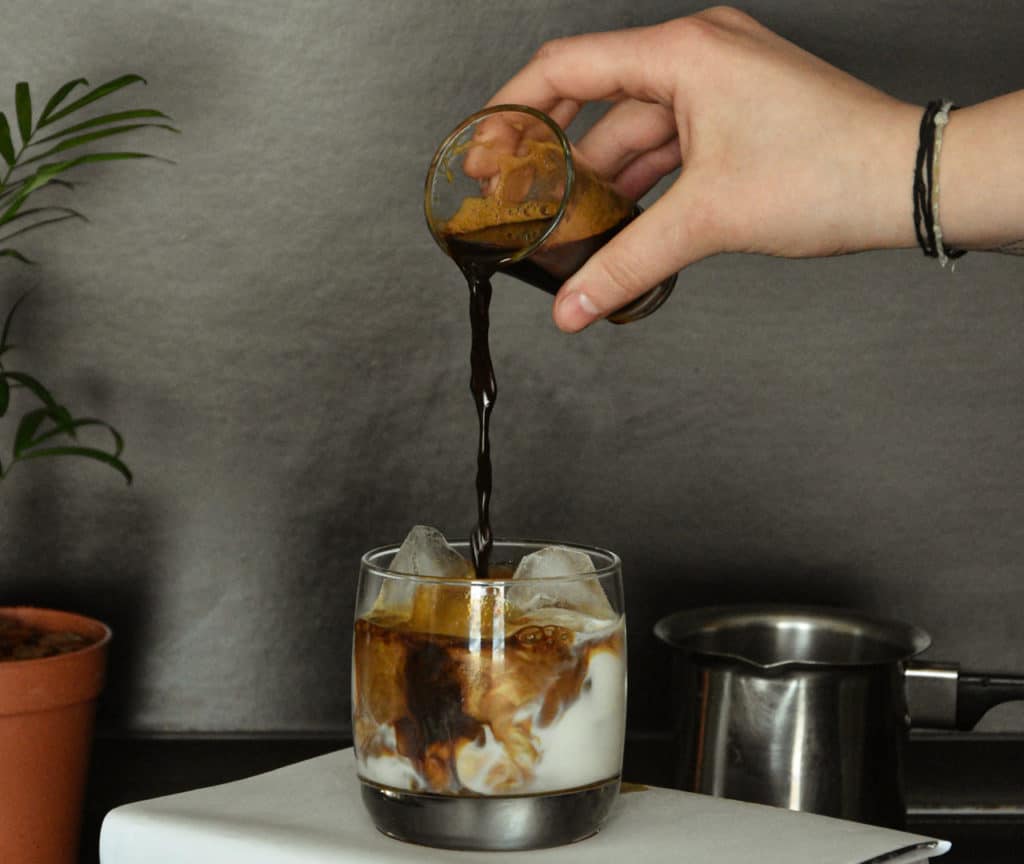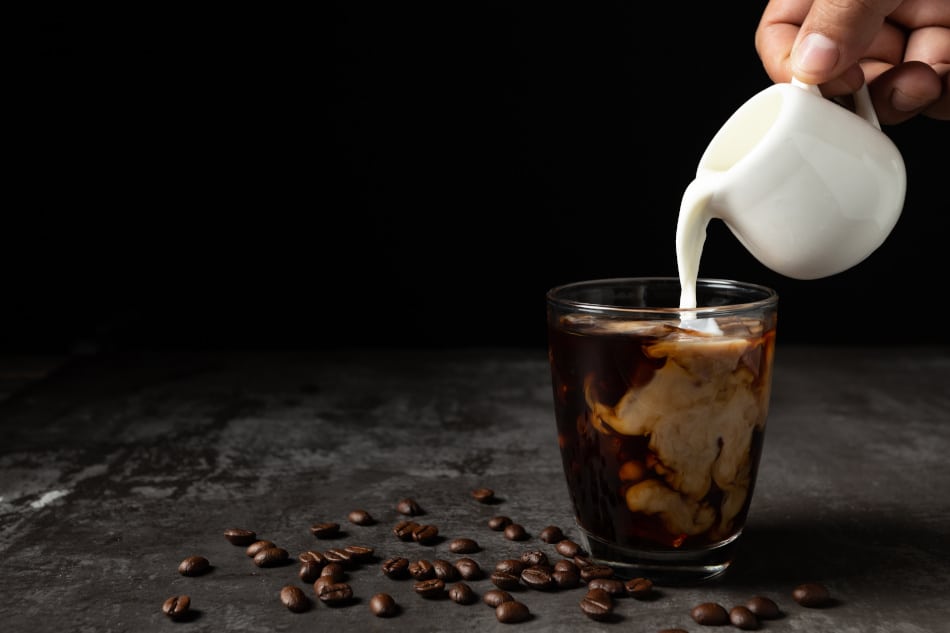As the worldwide population grows, enjoying coffee in diverse tastes and styles will talk about a particular kind—iced coffee. Coffee dates back to 800 A.D., and legend has it that 9th-century herders noticed the effect caffeine had on their goats, who appeared to dance after eating the fruit of the Coffee plant. Fast forward to the present, iced coffee is a staple menu of baristas, cafes, and coffee shops for a good reason. Let us look at this seemingly ordinary cold coffee drink, and we are going to answer the question, “How Do Baristas Make Iced Coffee?”
Iced coffee is made by brewing double espresso and pouring it over ice. Classic barista recipe can include 30 g. of coffee, 335 g. of the brewing water, and 165 g. of ice, resulting in 500 ml of iced coffee with 128 mg of caffeine (avg). Variations include simple syrup, sugar, vanilla, or chocolate.

How to Make Iced Coffee
The coffee world is much bigger than a pot of hot java. In fact, a lot of coffee’s popularity comes from drinking it ice cold. So with this popularity, baristas and coffee shops use different methods in making iced coffee, and these are:
First method: Espresso
- Grab a 300-350 ml glass
- Add ice up to 1/3
- Fill with full-cream milk, leaving a 2cm gap at the top
- Pour a fresh double espresso over the top
Our body perceives food as less sweet at lower temperatures, so naturally, espresso will taste edgier than when it is served hot. If you would like to know more about how espresso works, click here to be redirected to our article about it.
Second method: Cold Brew
- Weigh out 400 grams of coffee
- Grind it medium-coarse and add it to the filter bag
- Put the bag in the saucepan (at least 2.5-liter capacity)
- Pour 1800 ml of cold, filtered water over the grinds and stir
- Tie off the top of the bag, put the lid on the saucepan, and leave on the counter to brew for at least 12 hours
- In the morning, lift the bag and squeeze out the remaining coffee
- Bottle it up in something with an airtight seal
Cold-brew, also known as cold drip or cold press, is a method for brewing coffee with cold or room temperature water, and it typically has higher caffeine content compared to the first and third methods.
Third method: Iced Filter Coffee
This is the easiest method since you need to simply filter coffee poured over ice. Iced filter coffee can be made with a Pourover, Aeropress, or even a batch brewer. The best way to avoid watery, lukewarm results is to halve the amount of brewing water you normally use.
Choose the best method that excites your taste buds! Lately, there has been a frustration with the difference in price between iced and hot coffee—iced coffee has become more expensive than ever before.

Using Specialty Coffee To Make Iced Coffee
Now that you know how to make iced coffee, have you ever wondered what the best way to make it is? Also, have you wondered if you can use specialty coffee to make iced coffee? Let’s understand what the essence of a specialty coffee is and what makes it “special.” Specialty coffee is a term used for the highest grade of coffee available. It is related to what is known as the Third Wave of Coffee and is characterized as coffee of a higher quality that is produced by both innovative and sustainable methods.
In turn, it is strongly beneficial for anyone who loves iced coffee to use specialty coffee in preparing their loved drinks, as this will result in a more robust and flavorful cold drink that you and your loved ones will surely enjoy.
Having a premium bean for your iced coffee will result in a higher quality drink.
Not All Beans Are Created Equal…
Arabica coffee beans will be our suggestion to you, if it has notes close to caramel, chocolate or almond, you will create a bomb!
Coffee based on Robusta beans will have a strong flavor. This will be mainly for the bitterness characteristic of this type of bean. We address that topic here: “Is Robusta Coffee Bitter?.”
Not All Beans Are Roasted Equal…
Medium to dark roast will create a more predominant flavor for your iced coffee. Light roasted beans can result in drink with weak coffee flavor presence.
The drying process of the bean will also impact your drink, using washed beans will be very different result.
What we don’t like: Specialty Coffees with citric or berry notes. We will continue our laboratories and let you know how that goes…

Below are the people that love iced coffee:
- People who love the flavor—Around 91% of iced coffee fans enjoy a little flavor with their brew.
- People who are not afraid of the elements —About 40% of iced coffee drinks brave the elements and hold a cup with their bare hand in the winter
- People who need an extra pep in their step—Almost 64% said iced coffee is the cool choice when the extra boost is needed.
While iced coffee has been enjoyed for the longest time, specialty coffee is gaining traction and popularity. Specialty coffee is not your ordinary kind of coffee, and with it, you will enjoy more iced coffee bonding moments with your friends, colleagues, and loved ones. For more information regarding specialty coffee, click here to be redirected to our article about it.
Iced Coffee Caffeine Content
Naturally, iced coffee has caffeine, which in excess may pose some side effects. Iced coffee with 100 grams typically has around 40 milligrams of caffeine, while up to 400 milligrams of caffeine is considered to be safe for healthy adults. Drinking iced coffee up to twice a day won’t hurt your caffeine intake but remember that different iced coffee variants may have different caffeine content.
Compared to iced coffee, cold brew has more caffeine. Below is an example:
| Drink and Serving Size | Average caffeine content |
| 16 oz. iced coffee | 128 mg of caffeine |
| 16 oz. cold brew | 200 mg of caffeine |
Choosing between iced and cold brew can be hard, especially since they are both enjoyable. If you like bold flavor and you are looking for a kick in the morning, the cold brew is the drink for you. However, if you do not like a strong flavor but wants a cold coffee drink—iced coffee is the best choice!
If you’re ready to explore the wonderful world of coffee, visit our website to find relevant and insightful information and articles that you will surely enjoy.
What is Iced Coffee?
Iced coffee is a type of coffee drink which is served chilled, brewed variously with the fundamental division being cold brew—brewing the coffee cold, yielding a different flavor, and not requiring cooling. Iced coffee can be enjoyed either by being chilled or poured hot over, ice and because sugar does not readily dissolve into cold liquids, it needs to be added either directly to the hot base or to the finished product in the form of syrup.
Below are the reasons why there are a lot of people who loves iced coffee:
- Burnt tongues no more as there is no more waiting for iced coffee to cool
- Experience less acidity with iced coffee as research shows cold brew coffee has around 67% less acid content compared to hot coffee
- Conquer Instagram and Twitter with the luscious look of an iced coffee
- Regularly drinking iced coffee or any coffee, in particular, may have health benefits such as the reduced risk of illnesses like cancer, heart disease, and Alzheimer’s disease.
Studies have shown that drinking coffee helps lower the risk of depression.
The first edition of iced coffee made their appearance in the country of Algeria around the year of 1840 when the battle of Mazagran happened. The war was between the Arab and Berber military over Algeria, and this battle lasted for about 17 years, and because of its length, the French soldiers ran out of milk.
These soldiers started adding water to their coffee as a quick fix, and they also started drinking their coffee cold to fight the blistering heat brought up by summer months. This is where iced coffee was born—this cold, caffeinated drink that we enjoy today greatly these French soldiers. Since then, iced coffee has evolved into different types and variants.
Fun fact: Iced coffee products make up 25% of coffee store menus!
Sources:
- Wikipedia – Iced Coffee
- Dunkin Donuts – The Cold Hard Facts Around Iced Coffee in the Winter
- Spoon University – 11 Reasons That Prove Iced Coffee Is Better Than Hot Coffee
- Barista 411 – History of Iced Coffee
- PeaBerrys – The Barista Guide to Iced Coffee
- SCA – What is Specialty Coffee?
- HilineCoffee – Cold Brew vs. Iced Coffee – Which Has More Caffeine?
- MayoClinic – Caffeine: How Much Is Too Much?
